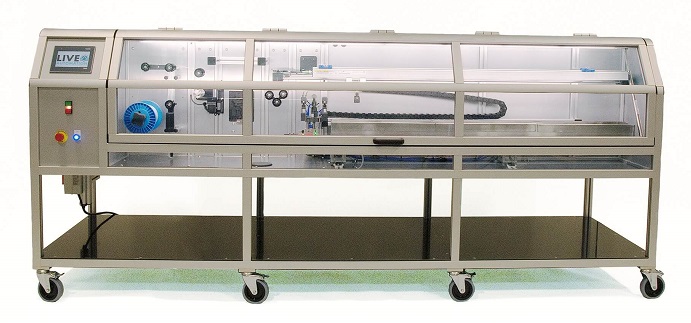 With today’s medical manufacturers vying for top position in the industry, they are working to meet new market challenges, quickly responding to customer demands and uncovering new opportunities. And one of the critical keys to success – the ability to be more efficient than ever before. So, when it comes to procuring custom medical manufacturing equipment, such as a suture tipping and cutting machine, while common core capabilities exist among manufacturers, it will be the ones that can offer a high-quality end product while increasing efficiency that will lend a competitive edge.
With today’s medical manufacturers vying for top position in the industry, they are working to meet new market challenges, quickly responding to customer demands and uncovering new opportunities. And one of the critical keys to success – the ability to be more efficient than ever before. So, when it comes to procuring custom medical manufacturing equipment, such as a suture tipping and cutting machine, while common core capabilities exist among manufacturers, it will be the ones that can offer a high-quality end product while increasing efficiency that will lend a competitive edge.
When sourcing a suture finishing machine, a checklist can not only help standardize the process, but it can also help medical manufacturers ensure that their purchase meets all of their customers’ quality standards and requirements, while meeting their own efficiency objectives.
Suture Tipping and Cutting Machine Evaluation Checklist
Needs Assessment for Suture Finishing Automation Machines
- What materials and suture types does the machine work with? Does it accommodate multiple types of sutures, such as implantable, absorbable or non-absorbable, and materials, such as nylon, polyester, polyglycolic acid or glycolide polymers?
- What are the temperature and tension ranges supported?
- Does it meet your requirements for standard suture cut lengths and longer lengths?
- Does it have the following optional features:
- Heat Tipping (Can stiffening dies be produced in any length?)
- Cyanoacrylate Tipping
- Round/Flat Detection and Tipping
- Necking Technology
- Knot Detection and Removal
- Flat Braid Fold and Weld Option
- Compound Angle Cutting Options
- Inline Laser Micrometer
Customizable Suture Tipping & Cutting Machines
Is the manufacturer’s machine both modular and customizable? Are there modular add ons for:
- Reel to Reel Rewind Machine
- Suture Hot Stretch Machine
- Constant Tension Core Feeder Machine
- Bobbin Winder Machine
- Automatic Braiding Machine
- Suture Diameter Testing Machine
- Electrospinning Machine
- Calendar Machine Specifications
- Skein Winder and Suture Coating Line
Standard Safety Features
- What are the parts made of that come in contact with the sutures?
- Is there the ability to set multiple levels of operator control?
- What hard wired safety equipment is included?
- How is the machine equipped for lock-out tag-out procedure?
- Does the machine fulfill the regulation of CE-marking and US machinery safety standards?
Machine Testing
- Does the manufacturer maintain an engineering laboratory for testing?
- Before procuring the suture tipping and cutting machine, does the manufacturer provide the opportunity for you to test their ability to meet your specifications?
- If so, what proof and documentation does the manufacturer provide post-test?
Delivery and Maintenance
- Is the machine delivered and installed by the same company that designed and built it?
- Is the machine delivered from the factory with connectors/methods to do the necessary calibration procedures?
- Does the manufacturer provide onsite operator training upon delivery?
- Are the machines serviced on premise?
- Does the manufacturer provide you with a list of replacement parts and how are they procured when needed?
Compliance
- How does the machine comply with increasing regulatory requirements?
Suture Tipping and Cutting Machines Built to Optimize Efficiency
As the medical device manufacturing industry looks to increase its investments in highly efficient machines and technologies, reviewing the latest advancements in suture tipping and cutting machines can prove a worthwhile undertaking. For companies looking to meet rigorous customer requirements quickly and precisely, re-evaluating long-standing technology against today’s machines that can quickly changeover from heat to adhesive tipping in a matter of minutes, for example, can impact the company’s capability to close new business.

